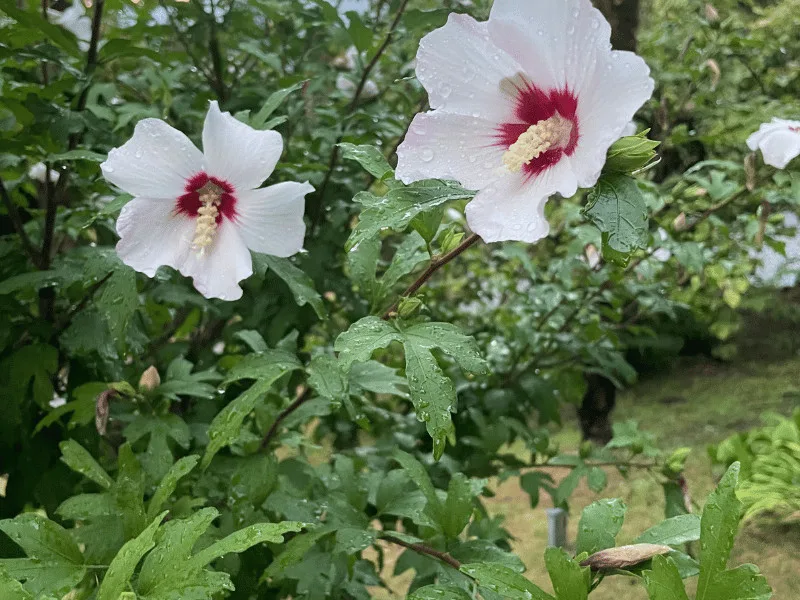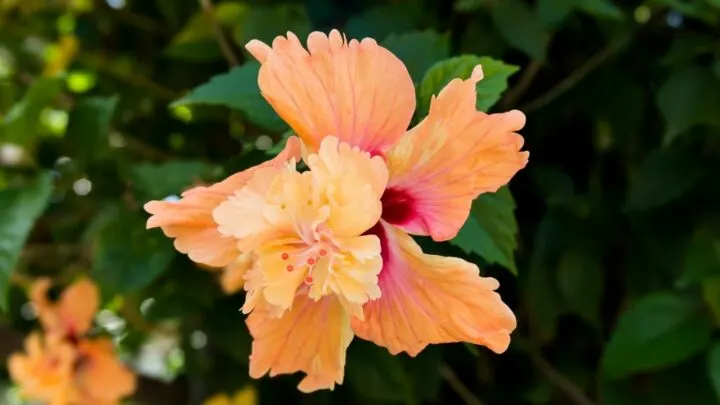You are interested in how big Hibiscus plants get because you want to plant one of these beauties in your garden. In this guide, you will find exactly what you are looking for.
The hibiscus, a plant part of the mallow family, is a common garden and house plant in tropical countries.
Though they are native to Asia and the Pacific Islands, hibiscus started to gain widespread popularity during the 1700s.
Part of the reason why this plant is so popular is because of the 300-plus recorded varieties available for anyone to pick from.
But, apart from the diverse variety of this plant, the hibiscus’ popularity is greatly attributed to its fairly low need for maintenance and its perennial qualities.
Hence, you’re assured that this plant’s flowers grow back and bloom every year.
However, how big does a hibiscus plant get? Well, please feel free to read the article below to find out.
Table of Contents
How big does a Hibiscus get?
How big a hibiscus grows depends on the plant’s variety. They grow in both width and height. A smaller hibiscus variety, such as the hardy hibiscus, can grow between 2-3 feet tall (61 -91cm), while other varieties, like the Rose Mallow, can grow between 3-7 feet tall (91-213cm). Taller varieties grown in their native areas have even been known to grow as tall as 12 feet (366cm).

Hibiscus plant width
Hibiscus plants grow up to 10 feet wide (3 m). Hibiscus is a shrub and grows 3x as wide as it grows tall.
When I plant Hibiscus plants in my garden, I always ensure it has sufficient space to grow without competing with other plants for space. The height is not a problem. I have a view on a lake where I live and I want to ensure my neighbors get to see the same. This is why I mostly plant shrubs in my garden that get wider than tall.
The climate factor
In climates that don’t experience typically frosty winter months, hibiscus plants are more likely to grow taller. This is due to the warm climates they originate from.
The biggest recorded hibiscus grew over 26 feet (7.9m), located in Funchal, Portugal.
Hibiscus don’t have an extremely wide root spread, meaning they are more likely to grow upwards rather than outwards.
Why hasn’t my hibiscus grown as tall as its average height?
Just because your hibiscus plant isn’t reaching the average height for its species, does not necessarily mean that you’re doing anything wrong.
This could be due to the climate and temperature of where you live.
As hibiscus are traditionally used to climates of more than 90 degrees, they often won’t reach their maximum height in a cooler environment.
Ensure that your hibiscus is getting enough indirect sunlight (at least 6 hours a day). This will aid growth and health levels.

Can I stop my hibiscus from growing too big?
The hardy and tropical are the most common varieties of house plant hibiscus. It is often undesirable for a houseplant hibiscus to reach an average height of 3 feet (91cm).
Trimming or pruning your hibiscus as and when needed will help to keep it at a smaller height. This can be done by pruning the stems from about half height and a 45-degree angle.
Top tip – ensure that you always use sterile pruning tools, as infection can kill hibiscus plants very quickly.
Frequently Asked Questions about Hibiscus Growth
How much space does a hibiscus plant need?
Hibiscus needs about 2-3 feet (61 -91cm) of space if planted in a garden. If they are planted in a pot, the pot needs to be an average of 12-14 inches (31-36cm). This is due to their long roots.
Are hibiscus plants fast-growing?
Hibiscus plants are relatively slow-growing. It would take quite a while for them to grow so tall that they would become an issue, and it can take 2-3 years to grow to their maximum height.
The last Hibiscus
Hibiscus can grow up to 3 feet tall (91 cm).

Daniel has been a plant enthusiast for over 20 years. He owns hundreds of houseplants and prepares for the chili growing seasons yearly with great anticipation. His favorite plants are plant species in the Araceae family, such as Monstera, Philodendron, and Anthurium. He also loves gardening and is growing hot peppers, tomatoes, and many more vegetables.


